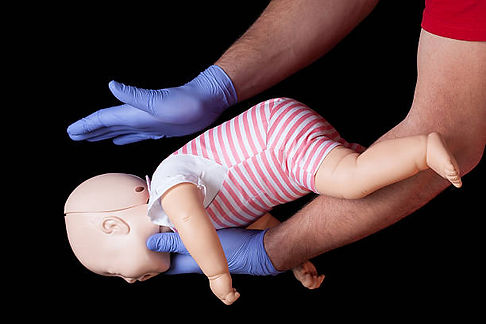

FIRST AID COURSES

EMERGENCY FIRST AID at WORK (EFAW)
1 day
Aim: To provide learners with skills to manage emergency situations.
Course Content:
-
Roles and responsibilities of a first aider
-
Assessing an incident
-
Primary survey
-
CPR and use of an AED (adults)
-
Recovery position
-
Choking (adult)
-
Seizures
-
Shock (including anaphylaxis)
-
Wounds and bleeding
-
Minor injuries (cuts, grazes, bruises, minor burns and scalds)
-
Accident reporting and incident recording
FIRST AID at WORK (FAW)
3 Day
&
FIRST AID at WORK -Requalification (FAW-R)
2 Day
Aim: To cover everything in EFAW, plus additional illness and injury management.
Course Content:
-
All EFAW content, plus:
-
Secondary survey
-
Fractures and dislocations
-
Sprains and strains
-
Head and spinal injuries
-
Chest injuries
-
Burns and scalds (severe)
-
Eye injuries
-
Poisoning
-
Asthma
-
Heart attack
-
Stroke
-
Diabetes
-
Anaphylaxis (expanded treatment protocols)
-
Major bleeding and shock (including catastrophic bleeding control, if applicable)
Requalification(FAW) 2 Days
Aim: To refresh and reassess FAW skills for current certificate holders.
Course Content:
-
All FAW topics reviewed and updated
-
Reassessment of:
-
Primary and secondary survey
-
CPR and AED use
-
Treatment of injuries and illnesses covered in FAW
-
Practical scenarios and skill assessments
-
Note: Learners must have a current or recently expired FAW certificate (typically within 28 days of expiry)


EMERGENCY PAEDIATRIC FIRST AID (EPFA)
1 & 2 Days
Aim: To equip learners with essential life-saving skills for working with babies and children in emergency situations. Suitable for childminders, early years staff, and parents.
Course Content:
-
Roles and responsibilities of the paediatric first aider
-
Assessing an emergency situation safely
-
Primary survey (baby and child)
-
CPR and AED use (baby and child)
-
Recovery position (baby and child)
-
Choking (baby and child)
-
Seizures and febrile convulsions
-
Shock (including anaphylaxis)
-
External bleeding and wound management
-
Minor injuries (bumps, bruises, grazes, small cuts, splinters)
-
Bites and stings
-
Accident reporting and incident documentation